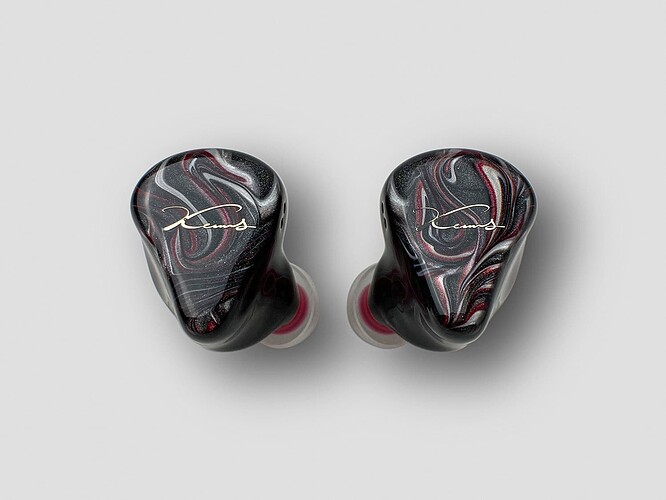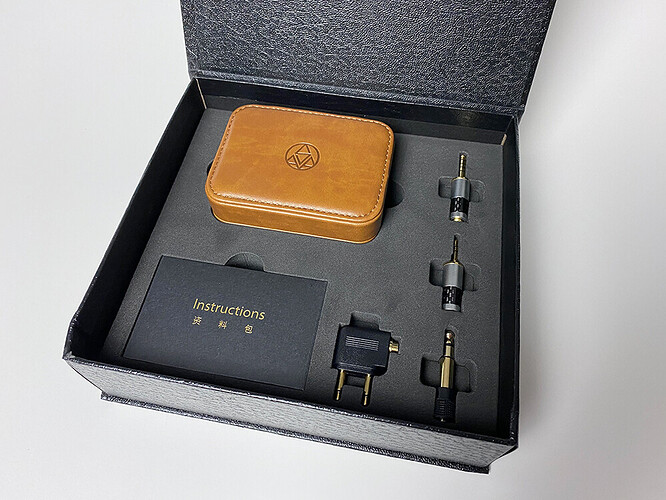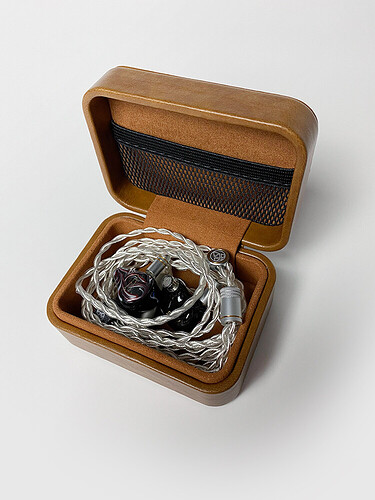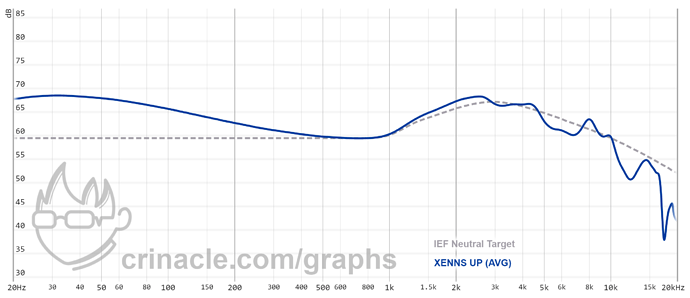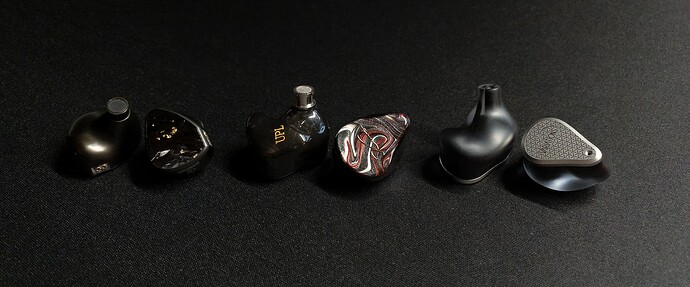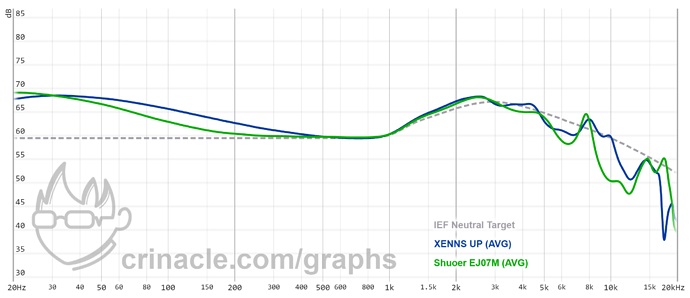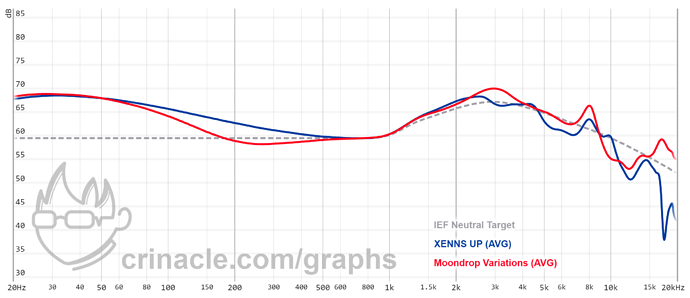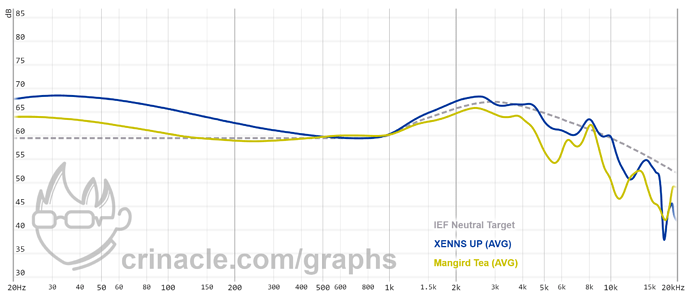Take your time, I appreciate the huge effort!
I also listen to a lot of bad guy’s library, but that’s only like 40% of my library so I’m curious to hear your take 
Guys,
Unfortenately I have bad news.
I don’t like my UP’s review at the moment so it won’t be released today. Also I haven’t done a single comparition with other tribids yet, but I think that might go fast since I know them all by now.
I’m going to a 3 day trip to Spain so it might take a while, tho.
In my opinion, the review of hybrid IEMs should be done with their original cable. The reason is in the many drivers that have different impedance and sound different with different cables! This can mislead prospective buyers. I’m just saying…
^^^ Agreed unless stated why an og cable wasn’t used.
It will.
10 char.
Ok. I appreciate the effort to make a presentation! Go on…
Xenns UP: Clubbing under the sun
Disclaimer: The unit used for this review is a loaner set and will be sent back. No incentives were given to say anything else but the truth in my own words. English is not my native language so I apologize upfront for any kind of miswording.
All photo credits belong to @Resolution that took some shots on my request. Thank you for that.
1. Introduction
Xenns (former Mangird) is a relatively new and unknown brand that made some waves during 2020 and 2021 in the 300$ golden bracket of IEMs when they released the Mangird Tea. The Mangird MT4 was released after the Mangird Tea but has not enjoyed the same cult following the Tea has. Some fans of the Tea (including myself) became hyped when news came that Mangird would rebrand themselves into the name Xenns and UP would be their first release. More hype followed when the driver configuration was announced: Xenns UP contains 1 Beryllium Coated 10mm DD for low frequencies, two Sonion 2300 series for mid frequencies, two Sonion customs for high frequencies, Sonion EST65DA01 for ultra-high frequencies.
Xenns UP enters the market with a 700$ MSRP, placing it within one of the most competitive brackets of the hobby currently (tribrids).
More info and shopping on Linsoul page.
2. Box and accessories
- Silver cable: 2.5mm to 0.78 2pin;
- Box contains one 2.5mm TRRS female to 4.4mm TRRS male adaptor;
- Box contains one 2.5mm TRRS female to 3.5mm TRS male adaptor;
- Box contains one 3.5mm TRS female to 6.35mm TRS male adaptor;
- Airplane adaptor;
- Carrying PU leather box;
- 3 Sets of KZ starline tips;
- 3 Sets of Silicone tips;
- 2 Sets of Foam tips (S and M);
- Warranty card.
3. Sources and accessories
To get my impressions only flac files were used only. Both Shanling M3X and Luxury & Precision W2 were used, but in the end the final thoughts were used only with the set connected to L&P W2 on 4.4mm balanced using the stock cable and M3X as source only. As for tips, all the review was done using Spinfit CP100 medium size.
4. Sound Signature
To begin with, let me preface UP’s sound by saying that this is the most specific and hard to describe set I’ve ever heard, but I’ll do my best to do it justice.
Generally speaking, UP is a very warm set, bass boosted and with a dark treble.
Let’s start with the bass region as it is the star of the show. Kicks with authority, rumbles when called, doesn’t bleed much into the mids and has a nice texture to it. One thing I have to note tho is that when listening to more bass anemic bass tracks, you don’t feel the drivers power. Seems like when bass is not emphasized enough, it won’t come out as powerful and more loose.
Mids are slightly recessed due to the bass tuning, but still very present and with a semi-forward presentation very close to its predecessor Tea.
The treble on this set it’s pretty close to the tuning used on Mangird Tea, only slightly elevated to compensate for the overall bass boost this set got - it’s tuned as slightly dark and non fatiding, while keeping some detail. Treble extension is also well done, giving some air and separation between all the warmth. Some people might dislike this type of treble, I personally love it.
With the obvious FR curve out of the way, let’s get into the special source, the warmth. UP sound signature is very hard to explain. It’s like all the replay is covered in a warm blanket. Not veiled, not distorted, just warm. It’s like you’ve added an instagram filter to the song.
Every note seems thicker, hitting heavier. And the even more “strange” thing is that it still kicks above all that warmth, still brings vocals forward and still has some treble spark and detail. I know, crazy. All this warmth comes more prominent when the tracks get busy- on simpler tracks, it’s less pronounced.
It’s one of those cases that a demo will be worth more than a thousand words. Hell, one million words.
5. Technicalities
Soundstage is above average, slightly outside your head. I don’t find it to have much depth or height, but it’s wide enough to go along the tuning.
Imaging is good, even though sometimes it doesn’t feel pinpointed due to all the warmth.
Detail and resolution are also average or above average, but can’t compete with detailed monsters like Mest Mk2 or sub-bass monitors like Variations.
6. Test tracks
- Lana Del Rey - Carmen/Million Dollar Man
Lana is singing in front of you. She appears as if you were in the middle of the stage and instruments are correctly placed in front of you and on your side. Xenns UP’s warm coloration brings up the note weight to a whole new level - Her voice never goes thin. Low frequencies get very present and take over some of the higher frequencies. There’s still plenty of detail on the song but, due to the tuning, it loses some sparkle - which is still ok for me.
Coloration apart, UP handles female vocals pretty well due to its forward presentation. You’ll lose some detail on Lana’s voice on these tracks due to the tuning and bass emphasys tho. Instruments are warmer but still have presence on upper harmonics.
Clearly UP wasn’t tuning with this kind of library in mind, but for me personally, any set has to pass some vocal tests for me to even consider it, specialized or not.
- John Legend - All of Me
John is singing in front of you while playing the piano. UP tuning brings John slightly forward, but it’s still close so no big deal here. His voice gets extra weight when it goes into upper notes, it’s slightly thicker than it should. The reason this is one of my test tracks is due to the details on his voice and because at around 2:24 his voice keeps going upper notes while some kind of subtle reverb effect is added. This is where UP falls short - it’s coloration is still adding too much warmth to the upper notes and the reverb effect gets too little attention, to the point of almost no notice at lower volumes.
I think overall UP handles vocals ok (good for the tuning, honestly - it’s not its specialization). It’s better for Male vocals, which was kind of expected. Its warmth blanket leaves out some of the details, specially on the upper regions.
- Jay Cosmic - The Tunnel (0:58 - 1:15)
Sub-bass quantity and quality are definitely there. This is where UP’s beryllium coated driver starts to show up its claws. Texture is pretty good, not Variations level of texture, but close. Rumble is very present as well. Great replay.
- RHCP - Throw Away your television
During the first 15 seconds of the intro, Flea’s bass guitar passes the test with flying colors. When Chad’s drum kit kicks in, you’re in for a threat. I usually only use this track to test the first 15 seconds, but I got hooked all the way in. One of the best replays I’ve heard of this song, touché - not the cleanest, but one of the most “fun” ones. The electric guitar could use some more energy tho.
- Laurent Garnier - Crispy Bacon
UP bring Gariner’s classic to a whole festival replay, makes you wanna stand UP and remember all the pre-pandemic raves. I usually prefer my techno tracks more balanced, but this kind of replay is more festival-like - Loads of mid bass kick, slightly less detail and upper frequencies, but FUN as hell. You feel every kick behind the warm tone, but you still get the clicks and clacks, even if less emphasised. Different replay, but a great and fun replay.
- Cirez D - On/Off
A very balanced techno track that any unbalanced IEM tuning will change the song’s course.
UP colors it with a darker tone, emphasizing the lower frequencies, but still keeping some of the bells and whistles. Same as with Garnier’s, it brings back the festival vibes and replays. Beryllium hits with authority and leaves no prisoners. By 4:30, when the music goes down to start building up again, UP’s warm signature feels nice and cozy, slowly showing its bass texture out. By 5:30 I’m back into a techno party waiting for that sweet sweet drop to start jumping. By 5:45 shills come back and you’re transported into a dark and sweaty disco, feeling the low frequencies around you.
Even if I’m more into balanced presentations, UP sure made press replay and get up. Touché, Xenns, touché. Thanks for the trip.
- Snarky Puppy - Tio Macaco
Good timbre, good separation and coherency. This track appeals to a set’s soundstage and imaging. Xenns passed the test on all of these with average or above average marks - imaging gets slightly blurred when there’s busy parts and warmth comes in.
To this kind of genre, I can’t recommend this set since it adds a lot of coloration to the replay and falls short on some of the individual instruments’ replay/detail, but still does a good job. Turns the track more into a fun jam session and less into a studio record.
- Kendrick Lamar - King Kunta
As expected, Kendrick’s vocals are slightly forward and the bass kicks with authority. Vocal is thicken, but you still get the melody and all the bells and whistles. Xenns UP brings a great yet warm replay to this genre. Hip-hop heads that like warm signatures might have they end-game right here.
- Aerosmith - Dream on
UP’s warm signature and forgiveness work really well with older records like this one. Bass guitar is more prominent while high note vocals (3:30) and electric guitars get smoothen out, reducing its natural fatigue. It’s a different but fun and relaxed replay, still containing most of the track’s detail. If you are interested in this type of music I strongly advise you to check out HBB’s review of this set.
- Slam - Vapour
I was going to talk about this song in this review until UP’s bass blew me off. If you get this set and like techno, try this song. Roar.
7. Comparisons
I’ll now compare Xenns UP to another two IEMs in a Tribrid Deathmatch. Every set will be using 4.4mm balanced and stock cable. All of them are running from Luxury & Precision W2 (Low gain, Tune 02, no EQ) with flac files. I listened to a lot of tracks on all the IEMs, but I used the following three to bring the divine judgment on:
- Billie Eilish - Oxytocin
- Agnes Obel - Curse
- Daft Punk - Aerodynamic
- EJ07m (Spinfit CP145, Tanchjim filters)
EJ07m has more sub-bass quantity while UP compensates it with more mid-bass elevation and kick. Texture and speed is better on EJ07m. UP’s mid-bass kicks you way harder in the chest, once again, bringing those live stage vibes.
Mids presentation is pretty close on both sets, although the warmth on Xenns UP makes voices thicker/meatier. EJ07m voice presentation is a little bit wider.
Treble presentation is pretty close as well, but due to UP’s warmth, EJ07m comes out as sparkly, while both being in the dark side. Overall air and extension always seem to be on Shuoer’s courtside.
Verdict: Overall, EJ07m has a cleaner presentation over UP, due to it’s more clinical/cool tuning, that some might even find boring - It’s more balanced. UP is the fun friend that turns libraries into parties.
Technically, EJ07m is on a level above Xenns UP - Overall detail/resolution, imaging, staging.
- Moondrop Variations (Spinfit CP155)
The mirror enemies finally meet. Cold vs Warm. Sub-bass vs mid-bass. Sparkle vs Bright.
Sub-bass is a no contest in favor of Variations best-in-class texture and presentation. But what about mid-bass? Mid-bass is one of my personal nitpicks with this set. This is where Xenns UP will win since mid-bass on Variations sometimes feels non-existent.
Regarding mids, I prefer Xenns UP presentation, even if they are elevated. The vocals on Variations feel pushed more in the background that I like (YMMV).
Treble rolls the exact same way as sub-bass in favour of Variations. Variations treble is less on my preferences, I usually prefer darker trebles, but credit where it’s due - Variations treble is awesome with some nice implementation of those EST drivers.
Verdict: Variations as a sterile presentation of the sound, while Xenns makes you feel you’re at a beach party by comparison. Although Variations’ sub-bass and treble are best in class, I prefer mids presentation from UP. To put it briefly, to my library, Variations is to find detail and stains on records while UP is to enjoy a sound. Both are great at what they do, but they do completely different things - if Xenns put a warm instagram filter on, Variations reduce the saturation and increase detail.
Technically, Variations turn the arena into a bloodbath. With some Monarch pedigree on its ADN, Variations is a tough bone to chew on.
- Bonus: Mangird Tea (Radius Deep Mount)
Disclaimer: Mangird Tea will not use stock cable since mine came as a bit funky - as been replaced for a 1:1 silver cable for the matter.
I decided to add a quick observation to answer one of the most requested takes on the internet - Is Xenns UP the upgrade to Mangird Tea?
In short: No, it’s not. Teas are more balanced, slightly warm but bring a more balanced vibe with a sub-bass focus on the lower end, while Xenns focus heavily on warmth and mid-bass. They do share some of the mids and treble presentation, but I wouldn’t consider them alike besides the house branding.
To this day, the closest to a true upgrade from what I love in the Mangird Tea is EJ07m (with tanchjim filters).
8. Conclusions
As mentioned above, Xenns UP is a completely different take on everything I’ve heard. I had to take some time and skim a lot of my library just to get the hang of it. It’s a very hard set to describe. When I heard it for the first time I liked it, but I couldn’t understand why. Guess the first thing I noticed was its kick, its roar.
I don’t think some people will claim Xenns UP has an audiophile tuning since it’s too colored. But so what? It’s FUN. I can’t recommend it as an all rounder for sure, but it’s a good set to pair along with some more detailed and cold sets. It switches the gears, it switches your library for good or worse, and that’s up to yourself to decide. As HBB stated in his review, these are a “Guilty Pleasure” pair.
I think it’s a fine recommendation for specific genres like Hip-Hop or Electronic music for people that like ultra-warm signatures. Although, I strongly recommend trying to demo this set before buying. To my ears, it falls under the category of the “hate it or love it” set.
In an era of tier lists and “resolution” seeking, Xenns comes in to shake things up (pun intended) and remember us that not everything is about hearing the best scratch on a vinyl - sometimes it is just about having fun while doing the most important thing - enjoying music.

Thanks once again for the pro juiced photos. 
Bravo, well done! This comprehensive review puts many HFI reviewers to shame.
The review is TOP, thanks for that! But also include modern dynamic songs, such as Jason Richardson for guitars and Luke Holland for drums,even if you don`t listen to them  It will be very useful
It will be very useful 
I get your point, and i’ll amuse you about my picks.
Xenns UP is tuned to be FUN. That’s any hyper dynamic genre with specific traits. I didn’t include stuff like that on a purpose. Not to make it look good, but just because I don’t think it’s meant for that. I can’t see why a person would buy a set like Xenns to ONLY listen to JR… Or vivaldi, or Max Richter. It won’t make sense, imo.
I’m not confortable giving my word on prog, but I know “Titan” from JR. Only set 2 sets I own that can keep up with it is Teas and EJ07m. EJ07m seems to be the best tribid for prog, but I’m pretty sure picks like 3dt, fh7, zen, dq6, mest mk2, etc… Will “crap” on it. Anyway, this is not my expertise area, so I will have to summon my mentor @Resolution for prog metal.
Thanks, a really interesting read and well written  (and your English is probably better than mine
(and your English is probably better than mine 
 )
)
Super detailed review bro, you nailed it 
Thanks everyone  also a public thank you to @hawaiibadboy since it’s his own set.
also a public thank you to @hawaiibadboy since it’s his own set.
I had fun doing it and jamming to UP. It’s a true party starter.
A special thanks to my iem brothers and sister. Thanks for letting me troll you everyday.
Thanks for the comparison. How about EJ bass vs Variations?
I’ll probably do a comparition soon since my Variations will be up for sale in a few days.
Variations’ sub-bass has slightly better quantity and texture than EJ due to tuning. Anything else is better on ej for my preferences and library.
Feel free to ask me about the prog metal/metal genre. As @nymz mentioned, out of all of the tribrids I own, the EJ07m is my preferred IEM for the genre. You won’t want something with a lot of boosted sub bass for metal and you need drivers that can keep up with the transient speeds.
Xenns Up would be one of my last choices for the genre.
Those are my pics and I’d also add the EJ07m to that group.
Are the BA drivers of the 07m Sonion 23 series and how do they deal with the dynamics in the mids?. Is the dynamic driver fast or lazy in comparison with FХ7? FH7 is very good, but the timbre and tonality are a bit bad! Hybrids and tribrids, in my opinion, are better for progressive, because they have a better soundстаге and images than DD. Some planar IEMs also have fast transitions.
